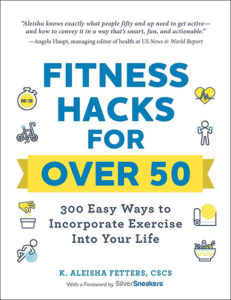
Whether you’re running an Ironman or walking laps at the mall, current guidelines on protein intake just aren’t enough to keep you healthy – especially if you’re over 50.
That’s the word from a new study published in the American Journal of Physiology – Endocrinology and Metabolism. Researchers from the University of Arkansas for Medical Sciences examined how four different eating plans affected the muscular health of 20 healthy adults ages 52 to 75. The researchers randomly assigned participants to one of four groups: Two groups followed the Institutes of Health’s current recommended daily allowance of 0.8 grams of protein per kilogram of body weight (for an 180-pound person, that comes out to roughly 65 grams of protein per day). Half of them divvied that protein up equally between breakfast, lunch and dinner, while the rest ate the majority of their protein at dinner (which is typical for most U.S. adults). The other two groups ate double the RDA (1.5 grams of protein per kilogram of body weight), either equally or unevenly distributed between meals.
After four days, researchers found that the more protein participants ate – no matter the timing – the better their bodies were at building muscle. Specifically, those who ate double their RDA of protein increased their rates of muscle protein synthesis (the process by which cells use protein to build muscle) and improved their net protein balance (the difference between muscle protein synthesis and protein breakdown).
And, although you’ve probably never heard these terms before, they really do matter: As we age, we naturally lose muscle mass and strength due to a trifecta of reduced muscle response to protein intake, changing hormones and for some, less physical activity. Called sarcopenia, this gradual loss of muscle mass has been credited with a litany of health problems, including insulin resistance, low bone mineral content and density, falls and fractures – even death, says lead author IL-Young Kim, a researcher with the university’s Center for Translational Research in Aging & Longevity. Plus, the greater your muscle mass, the more apt you’ll be to stick with the health-boosting physical activities you enjoyed in your younger years. Win-win.
Don’t Think You’re ‘Old’? You Still Need More Protein
OK, so 50 is far from old. But when researchers throw around the term “older adults,” they generally mean 50-plus. And while sarcopenia really doesn’t hit full force until 65, gradual loss of muscle mass and function can start even before your 50th birthday, according to Kim.
What’s more, research is increasingly showing that pumping up your protein intake – no matter your age – can boost your health. “Muscle plays an important role in whole-body metabolism in both young and old,” Kim says. For instance, in a recent study from the Pennington Biomedical Research Center, when people ate high-calorie diets, those who got 15 to 25 percent of their calories from protein stored 45 percent of the excess calories as health-building, metabolism-revving muscle. For someone on a 2,000 calorie-a-day diet, that would mean eating up to 125 grams of protein per day – roughly the equivalent of a two-egg omelet for breakfast (20 g.), chicken breast for lunch (30 g.), Greek yogurt as a snack (17 g.) and a salmon fillet for dinner (40 g.). Meanwhile, those who got only 5 percent of their calories from protein stored 95 percent of the excess calories as pure fat.
Your Protein Prescription
For maximal muscle, Kim says the majority of older adults need to consume about 1.8 grams of protein per kilogram of body mass per day.
Kim recommends getting the bulk of your protein from animal sources such as beef, fish, milk and cheese. Animal protein sources contain all of the essential amino acids your body needs. While all amino acids help build protein (both in your foods and in your muscles), the human body cannot produce every kind and relies on diet to get the nine “essential” varieties – and if you don’t get those, good luck preserving your muscle. According to Kim, however, most adults tend to get less of their protein from animal sources as they age. And since plants rarely contain all the essential amino acids, that may also contribute to older adults’ reduced muscle mass.
However, that’s not to say you can’t cut out or down on meat and get the protein you need. You just need to put forth a little bit of effort to make sure you still get all of the essential amino acids your muscles crave. Quinoa, chia and soy, for instance, are all “complete” proteins, meaning they contain all nine essential amino acids. Meanwhile, since even “incomplete” plant sources contain some essential amino acids, by mixing and matching your plants – basically just ensuring you’re eating different protein-packed plants at every meal – you can be confident that, come bedtime, you’ve gotten all nine of them.
Whatever protein you choose, get ready to enjoy an immediate health boost. After all, in the study, participants started building more muscle within just four days. Also, by adding strength training exercises into your healthy living routine (shoot for at least three times a week), you’ll not only build muscle, but you’ll wind up eating more protein without even thinking about it, Kim says. Since, in response to exercise, your body will work to convert your foods’ amino acids into muscle, it will automatically crave more protein.
Fitness Hacks Over 50
Leading a healthier life doesn’t have to be about dramatic lifestyle changes, super-long workouts, or expensive gym equipment. And, for the most balanced, sustainable results, it shouldn’t be! Experience how true lifelong fitness is about integrating movement into your day-to-day, don’t-even-think-about-it routine. Feel your best with Fitness Hacks for Over 50!
